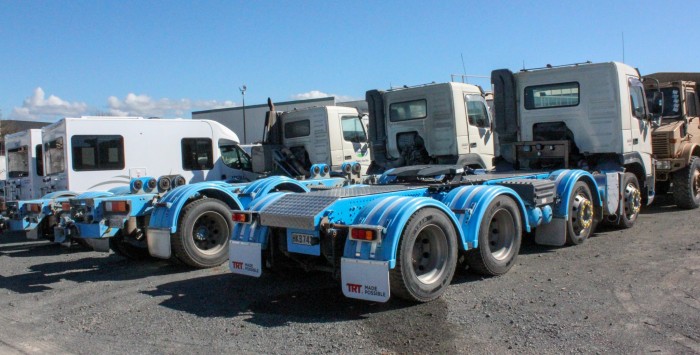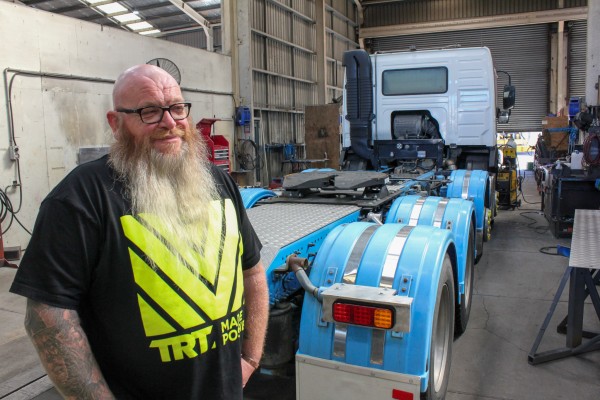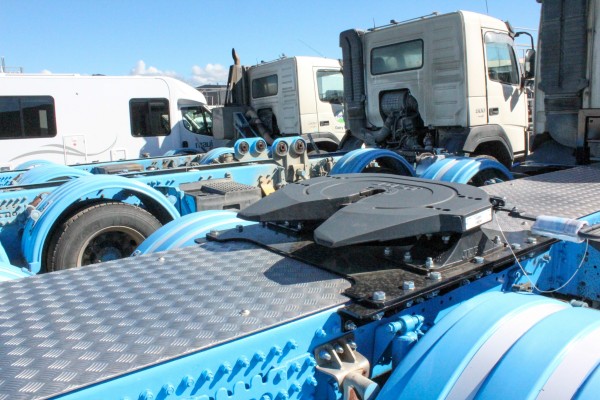Tanker Trucks To Tractors
25 July 2024
From Truckbody & Trailer Magazine
TRT’S head office and manufacturing facility in Hamilton is working through a major refit project for Fonterra, turning end of life tanker trucks into tractor units for refrigerated trailers.
Fonterra replaces its trucks when they hit around 1.4m kilometres but Fonterra’s Value Chain Transformation Manager, Lamine Abderrahim, says ongoing cost pressures means Fonterra is always looking for ways to work more efficiently.
While the tanker fleet will continue to be refreshed with new trucks, Fonterra is now planning to hold onto the old tanker trucks but put them on lighter duties. They are being converted to tow 16.5m refrigerated trailers being built by Freuhauf, to take on distribution of packaged product.

“The tanker fleet trucks are well maintained by Milk Collection and they are built to a high specification,” says Lamine, and giving them a second life extracts more value from that investment.
“We plan to average 300k km out the converted units.”
Fonterra’s different fleets are usually managed separately. However, this joined up thinking will see leased tractor trucks in the refrigerated transport fleet replaced as the converted trucks become available.

Five Volvo Version 4 trucks are being converted into tractors and another five will be fitted with rigid refrigeration bodies, says Lamine.
“We plan to have an ongoing conversion programme as more trucks reach their end of life in the milk collection space. We plan to covert roughly 10 units per year – about five percent [of the fleet].”
However the plan still has to prove itself in practice. “It is the first year we are doing this. We will assess the effectiveness of this over the next couple of months to see how the units perform as part of the milk delivery fleet,” Lamine says.
He says Fonterra’s Milk Distribution operations team worked closely with TRT’s Fabrication Foreman, Wayne Bryant, who designed the conversion, and the trailer suppliers to finalise the current configuration, making sure the converted units would work in a “metro-type operation”.
Wayne says the chassis length on the 8x4 trucks is being reduced by 700mm but there’s a lot of work involved. The big task is moving the rear axles forward to get the right weight distribution on the steer axles when fully loaded in the new configuration. The chassis was shortened from the end and the axles were moved forward, in preference to chopping a section out of the middle of the chassis.
Wayne says the loads on each axle have been weighed and the maths done to make sure the rear axles, suspension, and fifth wheel were optimally located.
The ancillaries hung on the chassis also have to be moved. The diesel tank and hydraulic tank are one unit on these trucks and they sit between axles two and three. They had to be separated and relocated, says Wayne. The Adblue tank also has to be moved from between axles two and three to between axles two and one. The drive shafts were shortened and balanced in TRT’s own specialist driveshaft workshop.
Finally, says Wayne, as overhead exhaust stacks aren’t allowed on trucks servicing supermarket sites, the stock exhausts which run up the rear of the cab, have to replaced with a side-mounted exhaust, exiting on the driver’s side. There’s about 400 hours of work in each truck, says Wayne.

TRT’s Te Rapa workshop works on two trucks at a time. Nine 8x4 and one 6x4 2014 model vehicles are currently being converted. Wayne expects another batch of 2017 model vehicles will come into the workshop in May and June.
